Installation of XPenology DSM 5.1 in Proxmox (hypervisor KVM)
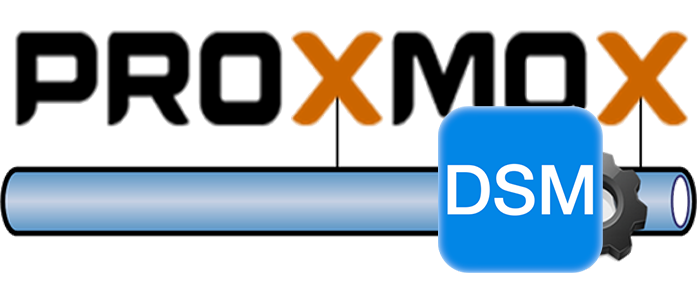
Installation of XPenology DSM 5.1 in Proxmox (hypervisor KVM) may be a bit tricky, not too scary though.
We need to create a new VM using the button „Create VM” in the right upper corner of the Proxmox window.
We start creating a new VM by choosing a name for our VM. In the next tab „OS” we will choose „Other OS type”
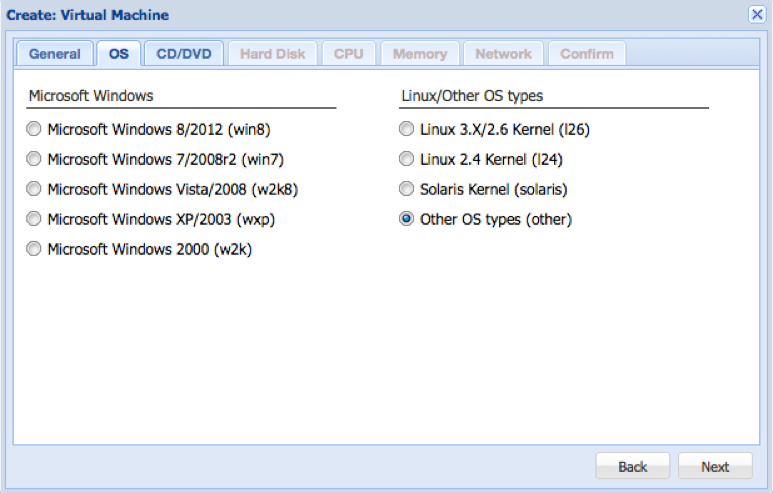
In tab „CD/DVD” we choose not to use any optical drive:
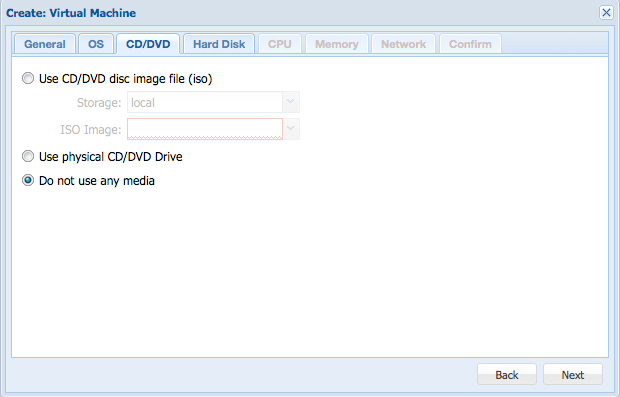
In the tab „Hard Disk” we can decrease the size from default 32 GB to 1GB.
The important thing is to leave bus as IDE and disk format qcow2.
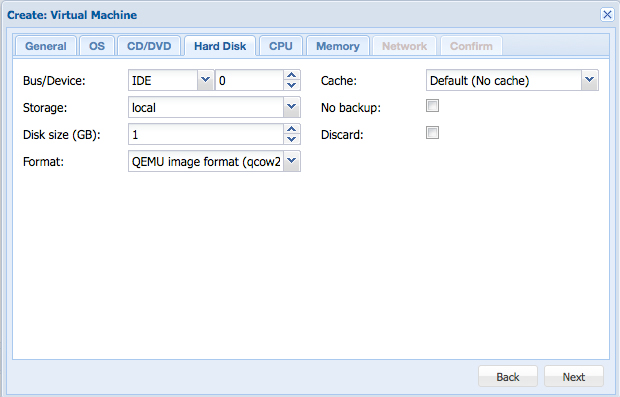
The last tab we would make changes will be „Memory”. Here we would like to change default 512MB to more flexible dynamic range from 512-1024 MB or any other size we prefer depending on the ammount of RAM available in the system.
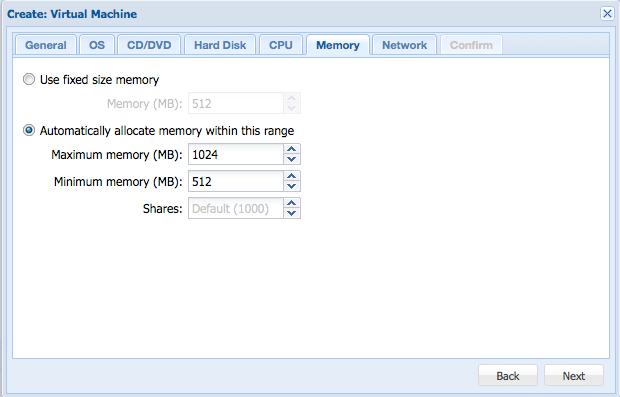
Please make sure there are IP’s available from you DHCP server. In case you need MAC adress you can get it from the settings of your VM after it has been created.
The creator should create a new VM with the number and the name we chosen. For the purpose of this tutorial we assume the number of VM is 100.
Before we will go any further with DSM it would be wise, to attached additional SATA drive to VM, which will act as regular storage. For myself I have chosen just simple 32GB size to not waste space only for DSM.
To do so we need to login to Proxmox and in the “Hardware” tab of our VM we just click “Add” button and choose appropriate type of hard drive.
Later on we can attach variety of hard drives we could “share” among other VMs we could have in our system to make this system more flexible.
Getting a vmdk image of DSM 5.1
First of all we have to get proper nanoboot image. We need to go to XPEnology project webpage to get vmdk file.
Once we have it we need to use ftp to throw it to /share folder in Proxmox.
Don’t worry there is one created by default /var/lib/vz go ahead and use it to throw the vmdk file in there.
For this tutorial purpose we will rename it as „dsm51.vmdk”
We need to convert vmdk file into qcow2 format.
Converting to qcow2
We want to convert the .vmdk image file to qcow2. To do this, use the following command:
qemu-img convert -f vmdk /var/lib/vz/dsm51.vmdk -O qcow2 /var/lib/vz/images/100/dsm51.qcow2
This can take a while depending on the size of file and speed of your system.
Please note the destination folder is within default /var/lib/vz folder in its /images subfolder and /100 sub-subfolder which is corresponding to the number assigned by the system to our VM.
It happened to me once or twice that vmdk file didn’t work, meaning the DSM booted but installation of the .pat file failed. The curious thing about it was the DSM Installer wanted to format two drives (in my case 2 7). It should ask about formatting only one drive.
Should you receive by any chance this message and then installation failed this is what you have to do.
Go to xpenology.nl website and download iso file, then mount it and then extract to vmdk files. Inside ther should be two files there. XPEnoboot_DS3615xs_5.1-5022.3.vmdk and XPEnoboot_DS3615xs_5.1-5022.3-flat.vmdk or similar.
In this case we need to copy both files to the /var/lib/vz over and without changing their names convert them using in command the file which is without “-flat” in it’s name.
qemu-img convert -f vmdk /var/lib/vz/XPEnoboot_DS3615xs_5.1-5022.3.vmdk -O qcow2 /var/lib/vz/images/100/dsm51.qcow2We should have the outcome in /images/100 pretty soon.
This time DSM Installer should ask to format only one drive (in my case 2)
Then it should work.
Final Steps
Once the conversion is complete, we need to edit the conf file for the VM.
nano /etc/pve/local/qemu-server/100.conf
In the line with ide0: we want to change
vm-100-disk-1.raw,size=32G
to
dsm51.qcow2
We may delete the empty disk created by proxmox when you created the VM.
rm /var/lib/vz/images/100/vm-100-disk-1.raw
Start the VM. Allow some time for nanoboot to kick in.
Using Synology Assistant we should be able now to check our network environment for a new DSM box ready for installation of DSM.
The last thing to do is to point the installer to the image of DSM from XPEnology and finish the installation of DSM as usual.
Happy Days!